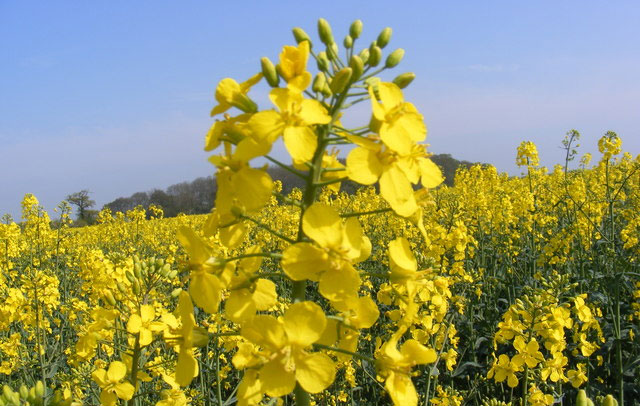
Oilseed rape (OSR) plantings in Britain for harvest 2018 have rebounded, according to provisional figures which show an increase of 9 percent.
According to AHDB's Early Bird Survey, good moisture levels and less flea beetle damage than last year meant there was a favourable establishment period this autumn.
The report states that less of the OSR crop is likely to be written off as failed crops.
Figures show this is in stark contrast to the previous two years. The forecast 2018 OSR area includes losses to date.
Following five consecutive years of decline, the forecast area of OSR has increased by nine per cent compared with harvest 2017.
This is the first time the area has been over 600,000 hectares (ha) in Britain in three years, however it is still 19 per cent below the record area of oilseed rape – which was 756,000 ha for harvest 2012.
AHDB Analyst Daniel Rooney said: “Planting decisions will have also been driven by improved gross margins or higher prices, together with poor alternative options for break crops.”
In some cases, OSR will have been the most profitable crop for 2017, therefore influencing areas for 2018.
'Continued squeeze'
In contrast, autumn drilling conditions for other crops have been difficult in many parts of the UK following a long and late harvest, slowing the winter plantings and meaning winter drilling has continued later than usual.
Typically, under these conditions, the UK tends to see slightly less autumn cropping. Coupled with agronomic incentives for more spring cropping and lower costs of production for some crops, this trend appears to be continuing.
Mr Rooney said: “This means that we are seeing a continued squeeze on the wheat area as well as our ongoing love-affair with spring barley.”
The wheat area is forecast to fall by two per cent, which, if correct, would result in 1.752Mha for harvest 2018. It would be the fourth consecutive decline in area.
This includes spring wheat, which anecdotally has shown evidence of another potential increase in area in 2018. The forecast wheat area for 2018 equates to an area three per cent below the last five-year average.
Barley
The winter barley area is expected to fall by 9 per cent, while the area of spring barley is anticipated to continue its increase, with the 2018 area forecast to be up 3 per cent at 773,000ha. This is its fourth consecutive rise in area.
Other than for the extreme years of 2001, 2009 and 2013, caused largely by weather events, this would be the highest area of spring barley since 1989. In 1989, the spring barley area was still falling from its highs of around 2.0Mha recorded in the 1970s.
The area of oats in recent harvests has been above historical averages with a rising trend. However, the area for 2018 is projected to fall by less than 1 per cent to 160,000ha.
Pulses are expected to reduce in area by six per cent, wiping out the gains the crop group had made in the last two years.
This year’s Early Bird Survey covers a 79 per cent greater area than previous years’ surveys. Later in the year AHDB will release a regional breakdown and final figures of planting and planting intentions.
